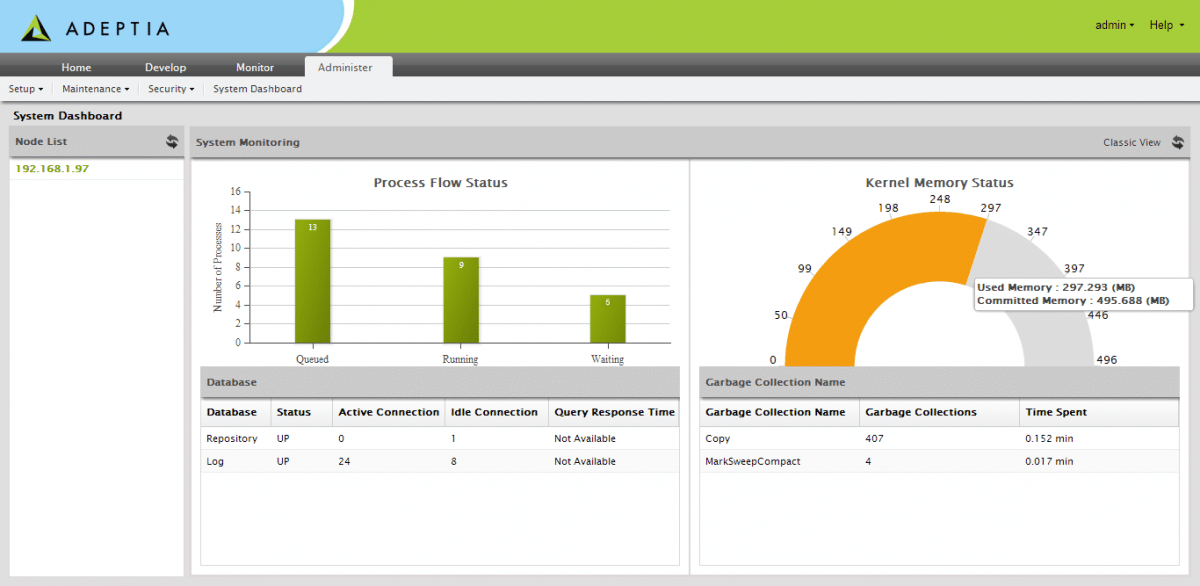Extract, Transform, and Load (ETL) is a term synonymous with data integration and data warehousing. ETL tools are now being widely used across various industries for enterprise-wide integration. They have been quite popular for a few years now, still, there are many businesses who are reluctant to implement them.
This reluctance may be due to misconceptions such as ETL tools require huge upfront investments or ETL tools are not secure, or we have resources who can address the data requirements efficiently. This post will help them understand how professional-grade ETL tools can be an asset to their business.
IMAGE: ADEPTIA
7 Reasons Why An ETL Business Data Integration Tool May Be A Good Business Decision
1. Helps You Manage Data Flow
Most ETL business integration tools offer insights on the data flow through a visual graphic interface. These tools are designed such that they ensure data enrichment at various phases. The dashboard provides you an overview of these phases, and offer you a big picture of data flow, thereby allowing you to make the right decisions.
Some advanced tools feature data flow designer that provides graphic design overview and enable users to create multi-step data flows and implement their own business rules using diverse drag and drop features.
2. Scheduling ETL Tasks Efficiently
The graphic interface of the business integration tool allows you to schedule ETL tasks efficiently, without requiring you to create scripts in open source applications. Many ETL integration tools are equipped with job schedulers that trigger data flows on the basis of a schedule that is predefined.
3. Ensures Better Information Flow Across The Organization
Most ETL business integration tools feature simple and easy to follow interfaces, which have evolved over a long time. These interfaces are implemented after a series of testing and iterations to optimize user experiences. So, by using an ETL tool you can easily coordinate with a team and share information effectively.
Members of your team can easily respond to your requirements by seeing the graphical interface. Many advanced ETL data integration tools also support data flows requiring human intervention. For instance, an ETL tool will create business alerts and send them through emails. These alerts will allow business users to resolve problems, upload, download, or share important documents, or use data to make business decisions.
4. Equipped With Connectors
If you are still in the favor of scripting your own ETL situation, then you may be required to create hundreds of lines of a script for transferring data from different sources. Against this, ETL business data integration tools allow you to utilize connectors that enable efficient data transfer. If you are using an in-house tool, you may need to create code for handling file distributions, loops, batch sizes, and compression, which is a time-consuming process.
5. Enables Data Transformation
As said before, advanced ETL tools possess user-friendly graphical interfaces. Many interfaces also offer drag and drop, which help create data transformation code easily. This allows IT teams to create data maps easily against manual coding which may take months to complete. Also, these interfaces allow users to identify and minimize bugs in the data transformation process.
6. Support Large Data Volumes
Your data needs are growing, which increase the pressure on the data integration tool. If you are using a custom-built solution or a legacy business data integration tool, perhaps you may face challenges in the future.
However, if you are using a professional-grade ETL tool then you can be assured that it is capable of handling large data volumes that you may encounter in the future. These solutions feature scalable architecture, which ensures efficient processing of data, without errors.
However, attaining the same perfection can be difficult if you are considering a custom solution. You will be required to write manual codes, and conduct rigorous QA to assure the quality of the tool.
7. Always Production Ready
When using custom solutions, you have to always rely on your IT team, because they are the only people who can code and solve different challenges. With drag and drop interfaces, your team can easily manage the information flow across the organization, and it requires no coding experience, too.
This means you can easily assign tasks to low tier professionals in the organization and concentrate on other important tasks, with a realization that the data flow structure will not be impaired. By using a data integration platform, you can easily save on time and resources needed to develop an in-house solution.
You can also take advantage of the rigorous development efforts put in by the ETL software vendor, who is dedicated to building an enterprise-ready application. You can easily utilize your top-notch developers for issues that may need immediate attention, without compromising on the efficiency, security, and scalability required for an efficient business data integration.
If you are interested in even more technology-related articles and information from us here at Bit Rebels, then we have a lot to choose from.


COMMENTS